Jacques Lipchitz
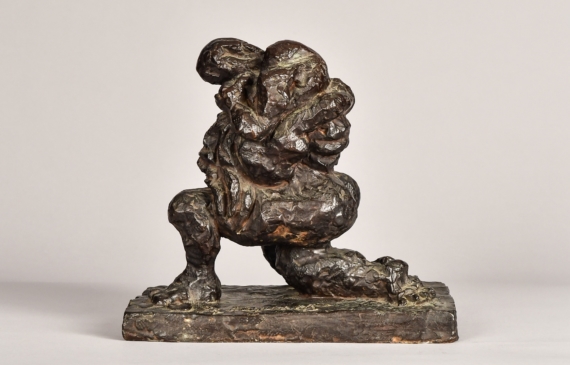
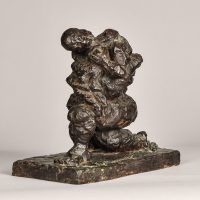
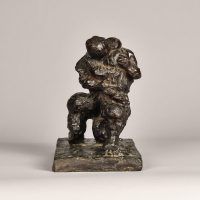
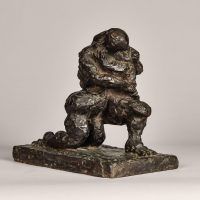



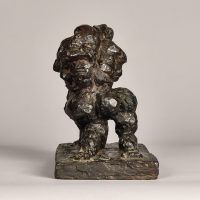
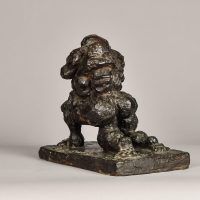
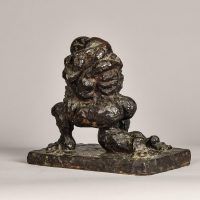
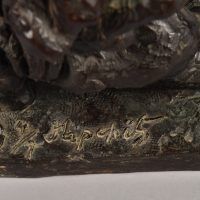
Jacques Lipchitz
Lithuanian-American, 1891-1973
Variation of the Theme of the Last Embrace (Salvataggio) IV, c. 1965
Bronze
9 ½ H. x 10 ½ W. x 6 D. inches
Signed on base: Lipchitz 4/7
Artist Description
Jacques Lipchitz, originally Chaim Jakob Lipchitz, was born in Druskininkai, Lithuania, in 1891 to Jewish French-American parents. He initially studied engineering under his father but at the urging of his mother moved to Paris in 1909 to study art at the École des Beaux-Arts and the Académie Julian. While there, he befriended legendary Modernists such as Juan Gris, Pablo Picasso, Diego Rivera, Alexander Archipenko, Amadeo Modigliani and others involved in the circle. He is credited with being one of the most successful Cubist sculptors of the time, successfully conveying the movement’s principles on a three dimensional platform when his contemporaries were primarily doing so in the two dimensional realm. Lipchitz’ cubist sculptures conveyed recognizable yet abstracted forms that were largely indicative of the style, with geometric planes making up final representations. His work earned him a place in the Salon National des Beaux-Arts and the Salon d’Automne in 1912, and later a solo show at Galerie L’Effort Moderne gallery in 1920.
Excelling in the Cubist realm, Lipchitz felt that his work was missing something by conforming to the rigidity of the style. In the 1930’s, he entered a new phase in his artistic career, bringing to life a greater emotional force in his models and experimenting with curved lines and freer forms. While in Paris, he also began making the majority of his sculptures in editions of 7 with few exceptions (one being Modigliani’s death mask, made in editions of 12). It was in 1941 that the artist was forced to flee from Nazi-occupied Europe and seek refuge in New York, where he would reside for most of his remaining life. His arrival in America coincided with the burgeoning Abstract Expressionist movement, undoubtedly an influence on the trajectory of his own work. His forms continued to take a softer, more passionate characters that reflected myth, heroism, and even religious symbols – his angular cubist sculptures foregone in favor of a rounded, unconstrained style. Lipchitz received a commission from Columbia University for his largest work “Bellerophon Taming Pegasus,” completed in 1964, was regularly shown at the Buchholz gallery, and had other public commissions in the U.S. and Israel. He earned a retrospective in 1954 that was shown at the MoMa (NY), the Walker Art Center (Minneapolis), and the Cleveland Museum of Art, and participated in Documenta at Kassel, Germany, in 1959 and 1964.
From 1963 onward, Lipchitz returned to Europe for a few months every year to work in Pietrasanta on the Western coast of Italy near Carrara. He was one of the most prolific 20th century sculptors, presenting ideal Cubist works that evolved into his own dynamic, emotive style.

